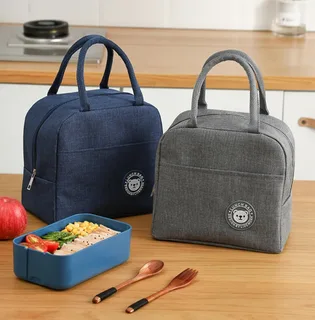Choosing the right lunch bag can make a big difference in how fresh and enjoyable your meals are throughout the day. Whether you’re packing lunch for work, school, or travel, understanding the differences between insulated vs. non-insulated lunch bags can help you make the best decision for your lifestyle and needs.
What Are Insulated Lunch Bags?
Insulated lunch bags are designed with materials that help maintain the temperature of your food—whether hot or cold—for several hours. These bags typically feature layers of foam insulation sandwiched between an outer fabric and an inner lining, often made of water-resistant materials like aluminum or PEVA.
Benefits of Insulated Lunch Bags:
- Temperature Control: Keeps food hot or cold for longer periods.
- Food Safety: Helps reduce the risk of bacteria growth by maintaining safe temperatures.
- Versatility: Ideal for perishable items like yogurt, salads, meats, and dairy.
Insulated bags are perfect for people who want to bring homemade meals to work or school without relying on microwaves or refrigerators.
What Are Non-Insulated Lunch Bags?
Non-insulated lunch bags are simpler in design and generally made from fabric, plastic, or paper. These bags do not have thermal protection and are best suited for non-perishable items or short-term use.
Benefits of Non-Insulated Lunch Bags:
- Lightweight and Compact: Easier to carry and store.
- Eco-Friendly Options: Many are made from recyclable or biodegradable materials.
- Budget-Friendly: Typically more affordable than their insulated counterparts.
These bags work well for dry snacks, sandwiches, or foods that do not require temperature control.
Key Differences: Insulated vs. Non-Insulated Lunch Bags
When comparing insulated vs. non-insulated lunch bags, it comes down to how long you need your food to stay fresh and what types of meals you pack. Here are some key differences:
| Feature | Insulated Lunch Bags | Non-Insulated Lunch Bags |
| Temperature Retention | Excellent | Poor |
| Best For | Perishable foods | Dry, non-perishable items |
| Durability | High | Varies |
| Cost | Moderate to high | Low to moderate |
| Ease of Cleaning | Often easy to wipe clean | Depends on material |
Which One Should You Choose?
To determine what’s right for you in the debate of insulated vs. non-insulated lunch bags, ask yourself the following:
- Do you need to keep food hot or cold for hours?
- Are you packing perishable or non-perishable items?
- Is portability or budget more important to you?
If you answered “yes” to needing temperature control or packing perishable food, an insulated lunch bag is likely your best bet. Otherwise, a non-insulated option may be sufficient for your needs.
Conclusion
In the end, the choice between insulated vs. non-insulated lunch bags depends on your daily habits, food preferences, and storage needs. For those who prioritize freshness and food safety, insulated bags offer excellent benefits. For short trips or non-perishable snacks, non-insulated options are lightweight and economical.


